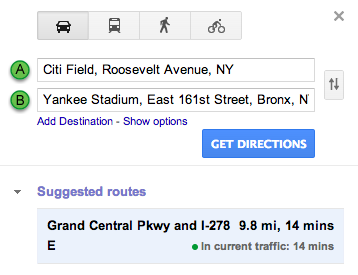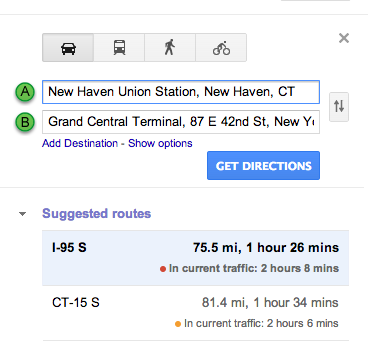Driving Data
Over the years, local news has been providing commuters with the traffic report, a (hopefully close to) real-time snapshot of which roads are clear and which ones have too many cars going way too slowly. The media’s methods of getting the traffic data were pretty straightforward. Radio stations would assign someone to listen to police scanners, collecting information about accidents and the like and extrapolating that data, all in an effort to inform drivers which routes to avoid. Over time, television stations got into the game as well, and — as TV stations are typically larger than radio ones — they had the budgets to take to the skies, employing helicopters to get a bird’s-eye view of the roadways below. Even state departments of transportation have gotten into the mix, with some setting up real-time camera feeds at critical junctures (here is an example).
As real-time data has become more and more accessible, traffic data has become a business in its own right. At least one company aggregates much of the information obtained through the above methods and sells it to providers of in-car GPS systems, allowing the GPS software to automatically re-route drivers around traffic jams. Even Google has gotten into the traffic reporting business; as seen below, searches using Google Maps (and, unpictured, using Google Maps apps on smartphones) show traffic density:


It’s not like Google to buy data, though. And this is no exception. Not only is Google getting its traffic data for free, but it’s getting it from you.
In 2009, Google announced that users of the Google Maps smartphone application were sending GPS data back to Google. In Google’s words:
When you choose to enable Google Maps with My Location, your phone sends anonymous bits of data back to Google describing how fast you’re moving. When we combine your speed with the speed of other phones on the road, across thousands of phones moving around a city at any given time, we can get a pretty good picture of live traffic conditions
So, yes, Google is tracking you — your car, via your phone — as you drive to work and everywhere else.
This could be a considered a significant invasion of one’s privacy, but Google states (caveat user?) that they take that seriously:
We understand that many people would be concerned about telling the world how fast their car was moving if they also had to tell the world where they were going, so we built privacy protections in from the start. We only use anonymous speed and location information to calculate traffic conditions, and only do so when you have chosen to enable location services on your phone. We use our scale to provide further privacy protection: When a lot of people are reporting data from the same area, we combine their data together to make it hard to tell one phone from another. Even though the vehicle carrying a phone is anonymous, we don’t want anybody to be able to find out where that anonymous vehicle came from or where it went — so we find the start and end points of every trip and permanently delete that data so that even Google ceases to have access to it.
If you’re still concerned, though, you can turn off the setting which otherwise allows Google to see your location. The downside? If you’re lost, Google won’t be able to tell you where you are.
Bonus fact: If you’re really concerned about the above, you may want to skip the cell phone altogether. Why? Because it can be used to listen in on your conversations. In 2006, a judge allowed the FBI to surreptitiously turn on a suspect’s cell phone microphone, turning the phone into a roving listening bug, enabling law enforcement to spy on conversations occurring within earshot of the phone.
From the Archives: Google’s Lawn Mowing Goats: Yep.
Related: A wiretapping scanner.
